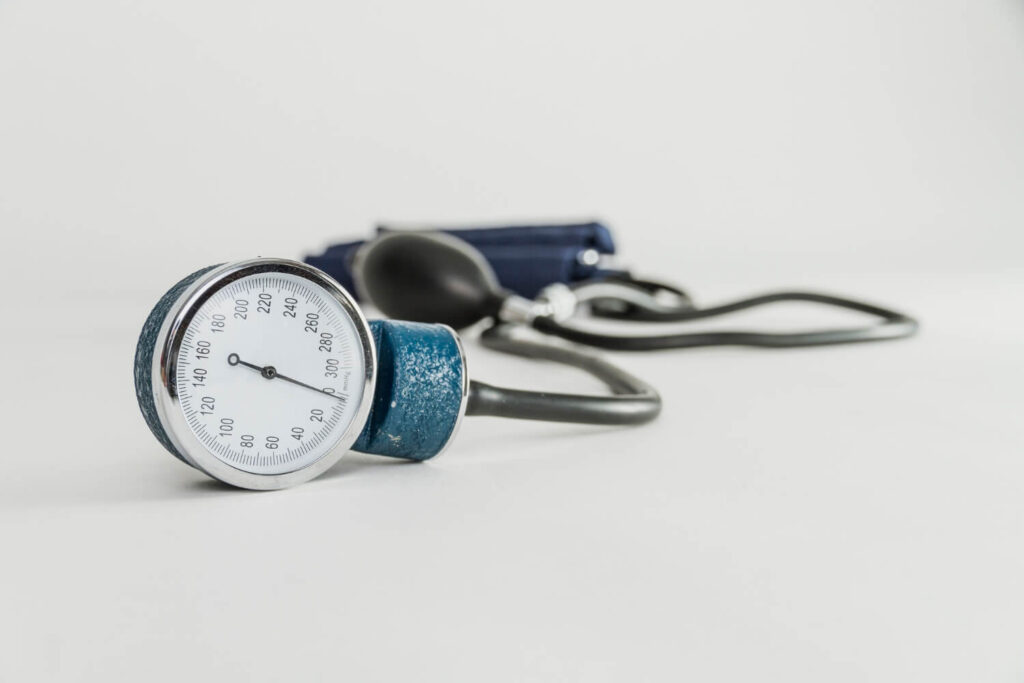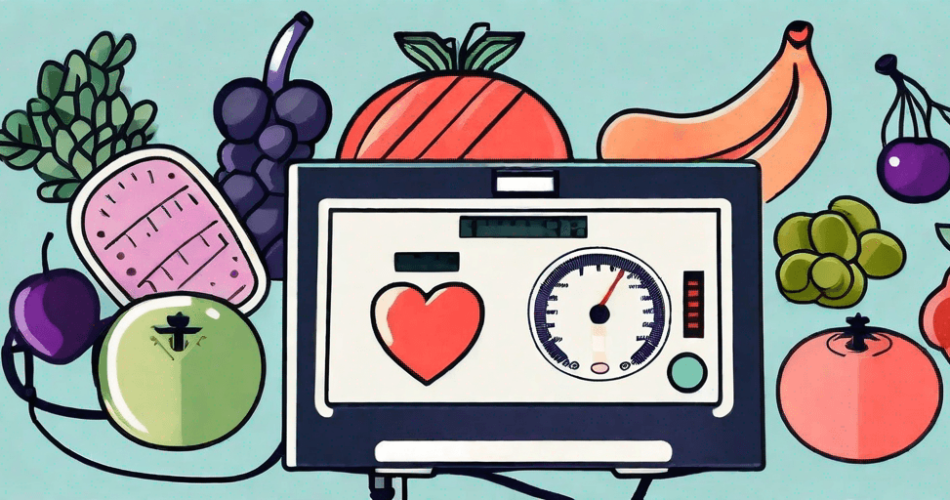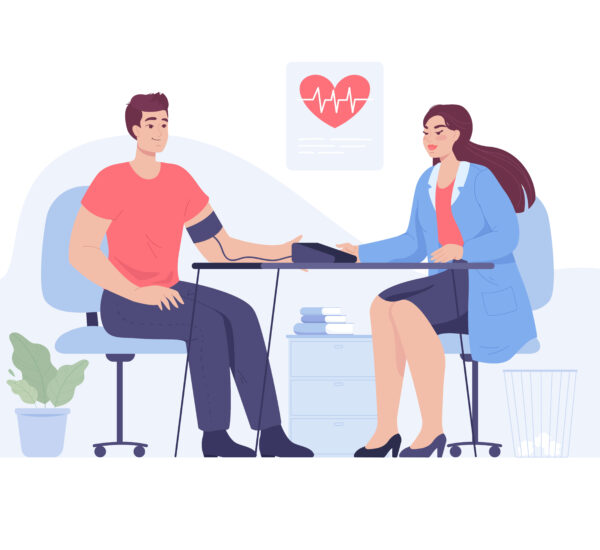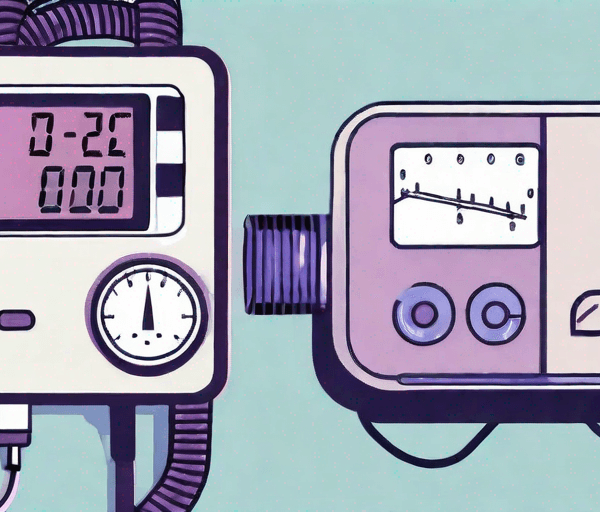It’s no secret how important controlling high blood pressure is as the fluctuating pressure can put anyone at risk. This condition also known as hypertension affects the overall health while the blood flow is limited. That’s because the blood vessels are being compromised, which leads to narrow pathways for blood. With this situation, the heart pumps harder, which leads to high pressure.
In today’s blog, let’s uncover the prevention strategies that can help manage this condition. By the end of this guide, the patient can further analyze their illness with the available list of specialty doctors. Let’s dive in!
Understanding High Blood Pressure

What is High Blood Pressure?
High blood pressure, or hypertension, is a medical condition characterized by abnormally high levels of pressure exerted by blood against the arterial walls. Blood pressure is measured through two values: systolic pressure, which is the pressure when the heart contracts, and diastolic pressure, which is the pressure when the heart relaxes. Normal blood pressure is considered to be around 110 over 70 blood pressure, whereas readings above 130/80 mmHg typically indicate hypertension.
When blood pressure is consistently high, it puts strain on the arteries and can lead to serious health problems. Over time, the excessive force of blood against the arterial walls can cause damage, resulting in conditions such as heart disease, stroke, and kidney failure. Controlling high blood pressure is a must to reduce the risk of these complications
Common Causes and Risk Factors of High Blood Pressure
High blood pressure can have various underlying causes and risk factors. It can be an inherited illness passed down through genes, or developed as a consequence. Nevertheless, both are threats that should be monitored as they can lead to the potential risking of one’s health.
For instance, unhealthy weight gain such as obesity is a factor that can lead to high blood pressure. Excess weight can put strain on the heart, which increases its force to pump blood in the body. Furthermore, sedentary lifestyle and poor diet are factors that can also lead to high blood pressure. With unhealthy habits such as no physical activity and eating unhealthy foods, it can promote weight gain. In short, obesity is possible, which can also increase the blood pressure.
Meanwhile, developed hypertension due to genetic factor is a different matter. The odds of having high blood pressure is possible due to having a family history of this condition. Although, it doesn’t mean that all family members can have the condition.
The Impact of High Blood Pressure on Health
This common health condition is known to affect millions of people worldwide. While it may seem like a harmless condition, the truth is that high blood pressure can have a significant impact on overall health and well-being.
Here are some of the consequences to look out for due to high blood pressure:
Heart Disease and High Blood Pressure

One of the most concerning consequences of high blood pressure is its association with heart disease. In fact, high blood pressure is a major risk factor for heart disease, which is the leading cause of death globally. When blood pressure is consistently elevated, it puts a strain on the heart, forcing it to work harder to pump blood throughout the body.
Over time, this increased workload can lead to various complications. One such complication is the thickening of the cardiac muscles, a condition known as left ventricular hypertrophy. This thickening occurs as a result of the heart’s attempt to compensate for the increased pressure. Unfortunately, this heart condition can impair the heart’s ability to pump blood effectively, leading to further complications.
Additionally, high blood pressure can cause the arteries to narrow, a condition known as atherosclerosis. When the arteries narrow, the flow of blood becomes restricted, which can increase the risk of heart attacks and heart failure. The reduced blood flow to the heart muscles can cause damage and potentially lead to a heart attack, while the weakened heart muscles can result in heart failure, a condition where the heart is unable to pump blood adequately.
Stroke and High Blood Pressure

Another severe consequence of uncontrolled high blood pressure is an increased risk of stroke. A stroke occurs when there is a disruption in the blood supply to the brain. When blood pressure is too high, it can damage the delicate blood vessels in the brain, making them more susceptible to blockages or ruptures.
When a blockage or rupture occurs, it can result in an ischemic stroke or a hemorrhagic stroke, respectively. An ischemic stroke happens when a blood clot blocks a blood vessel in the brain, cutting off the blood supply to that area. On the other hand, a hemorrhagic stroke occurs when a weakened blood vessel ruptures and bleeds into the brain.
Both types of strokes can cause lasting neurological damage and even death. The brain relies on a constant supply of oxygen and nutrients carried by the blood, and any disruption in this supply can have devastating consequences. Depending on the area of the brain affected, a stroke can lead to paralysis, speech difficulties, memory problems, or even a loss of independence.
Monitoring Your Blood Pressure

Monitoring and controlling high blood pressure is an important aspect of maintaining your overall health. Doing so can provide valuable insights into your cardiovascular well-being. By keeping track of your blood pressure readings, you can identify any potential issues early on and take appropriate measures to address them.
How to Measure Blood Pressure at Home
To measure your blood pressure at home, it is important to create an ideal environment for accurate readings. Choose a quiet and comfortable space where you can relax and focus on the task at hand. Sit in a relaxed position, ensuring that your back is supported and your feet are flat on the ground. It is recommended to avoid crossing your legs, as this can affect the accuracy of the readings.
Follow the instructions provided with your home blood pressure monitor carefully. Each device may have slight variations in terms of usage, so it is crucial to familiarize yourself with the specific instructions for your monitor. Generally, you will need to wrap the cuff around your upper arm, positioning it at the same level as your heart. Make sure the cuff fits snugly but not too tight.
Once you have properly positioned the cuff, activate the monitor and allow it to inflate. As the cuff inflates, you may feel a slight pressure on your arm, but this should not cause any discomfort. The monitor will then begin measuring your blood pressure, displaying the results on its screen. Take note of both the systolic pressure (the top number) and the diastolic pressure (the bottom number) displayed on the monitor.
It is advisable to take multiple readings throughout the day to get a more accurate understanding of your blood pressure patterns. Blood pressure can fluctuate throughout the day, so by taking several readings at different times, you can obtain a more comprehensive picture of your cardiovascular health. Keep a record of these readings, including the date, time, and the circumstances surrounding each measurement.
Understanding Blood Pressure Readings
As mentioned earlier, blood pressure readings consist of two numbers, expressed in millimeters of mercury (mmHg). The top number represents the systolic pressure, which is the pressure in your arteries when your heart contracts and pumps blood. The bottom number represents the diastolic pressure, which is the pressure in your arteries when your heart is at rest between beats.
A reading of 120/80 mmHg is considered normal for adults. This means that your systolic pressure is 120 mmHg, and your diastolic pressure is 80 mmHg. However, it is important to note that blood pressure can vary depending on factors such as age, sex, and overall health. It is always best to consult with a healthcare professional to determine what is considered a healthy blood pressure range for you.
Readings above 130/80 mmHg are generally indicative of high blood pressure. If your blood pressure consistently falls within the hypertensive range, it is crucial to take action to control it. Controlling high blood pressure is possible through understanding the significance of the readings. It can empower you to take control of your cardiovascular health and reduce the risk of complications.
Lifestyle Changes to Control High Blood Pressure

Dietary Modifications for Blood Pressure Control
One of the most effective strategies for controlling high blood pressure is adopting a healthy diet. This strategy is mostly followed by patients who aim to manage the condition without relying on medications. With this habit of reducing sodium intake, it can help reduce the possibility of spike in blood pressure reading.
Another approach a patient can do is to follow a diet plan specified for their condition. It would be best to visit a doctor for guidance and to acquire a tailored diet plan.
Weight Loss Journey for Controlling High Blood Pressure
Meanwhile, another key secret to managing high blood pressure is through losing excess weight. As mentioned earlier, obesity has its included downside, especially with the organ health of the patient. By maintaining a qualified normal weight, this conflict can be prevented.
To ensure the target weight, it would be best to check the BMI or Body Mass Index. Asking an expert in the field can also be beneficial to receive an accurate reading.
Abstaining from Alcohol for Controlling High Blood Pressure
On the other hand, another way to ensure a normal rate for the blood pressure is removing vices such as drinking alcohol. Alcohol can increase the blood pressure, especially if the individual aims to drink a lot.
Limiting the intake of alcohol can prevent the increase in blood pressure. Also, if the patient is using medications, the effect will not be compromised anymore. That’s because drinking alcohol can reduce the effectiveness of the medications.
Avoiding Stressors for Controlling High Blood Pressure
Another cause of high blood pressure is stress. If the triggers are constantly around the patient, it can affect their blood pressure more. Thus, the risk of other conditions like heart attack, stroke, and others are prominent.
If such factor is present, it would be best to consult to a doctor for further analyzation and prevention.
Conclusion
Taking charge of your health means understanding the pros and cons of every choice you make. Choosing to keep a normal blood pressure starts by keeping it in check through monitoring. Furthermore, natural prevention steps can also help improve your health. With these key steps, controlling high blood pressure will be achieved.
If concerns about your high blood pressure still persist, book an online consultation with an expert for immediate prevention steps.



